Eye of a Rook: Josephine Taylor on her debut women’s fiction
Today we welcome Josephine Taylor to discuss her new novel Eye of a Rook. Plus, thanks to Fremantle Press we have 2x ebook copies of this book to giveaway – entries open worldwide.
Disclosure: If you click a link in this post and make a purchase, I may earn a small commission.
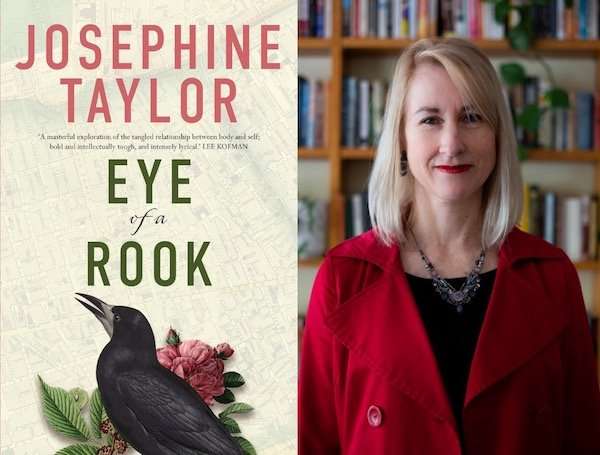
Eye of a Rook: Josephine Taylor on her debut novel
with thanks to Fremantle Press
Describe Eye of a Rook for us.
Eye of a Rook is a novel that revolves around the lives of two couples, one in Perth in recent times, and the other in Victorian England.
Alice Tennant is a writer and academic who suddenly develops inexplicable genital pain after a holiday with her husband, Duncan. To make sense of her symptoms, Alice searches the history of hysteria, discovering that such disorder is not new.
In 1860s London, Arthur Rochdale consults with real-life surgeon Isaac Baker Brown for some solution to his wife Emily’s disabling and very private pain.
In interweaving narratives, both marriages are put to the test, with characters discovering what might be possible – in themselves, and in those they love.
Your book is historical fiction and delves into chronic pain and the medical profession and its attitudes to women both in contemporary Australia and in Victorian England. Why look at both eras? Has much changed?
I researched the history of hysteria for my prize-winning PhD, an investigative memoir based on my experience of vulvodynia (chronic vulvar pain). I found it intriguing that gynaecological pain threaded through recorded history and that, until recently, women’s bodies had always been written and treated by men. I also saw that little had changed in the understanding of chronic genital pain since the nineteenth century, with the uptake of ideas from Freud and psychoanalysis leading to it being seen in sexual terms and/or as psychosomatic (‘all in your head’), rather than as a chronic pain disorder.
I think my interest in writing this lack of growth in awareness and understanding into a novel came from anger.
Basically, it upset me that women were still being under-diagnosed, mis-diagnosed and mis-treated! Alice’s experiences are true to life, because they are drawn from mine, and from the experiences of many other women.
Fortunately, awareness and understanding are now growing, largely driven by women themselves through social media, podcasts, blogs and the like, and by open-minded researchers and practitioners.
Eye of a Rook is also a kind of Victorian romance, with Arthur Rochdale seeming to provide his wife the kind of emotional support that your contemporary character Alice lacks. Tell us more about the relationships in the book – both ‘real’ and ‘imaginary’.
It wasn’t really planned, just how Arthur came to me! I realised, though, that it achieved what I wanted: to upset preconceptions. I suspect that most of us imagine the Victorian man in stereotypical terms, as patriarchal, unemotional and, perhaps, dominating. On the other hand, men as a whole have in recent times had to adjust to a new idea and practice of masculinity.
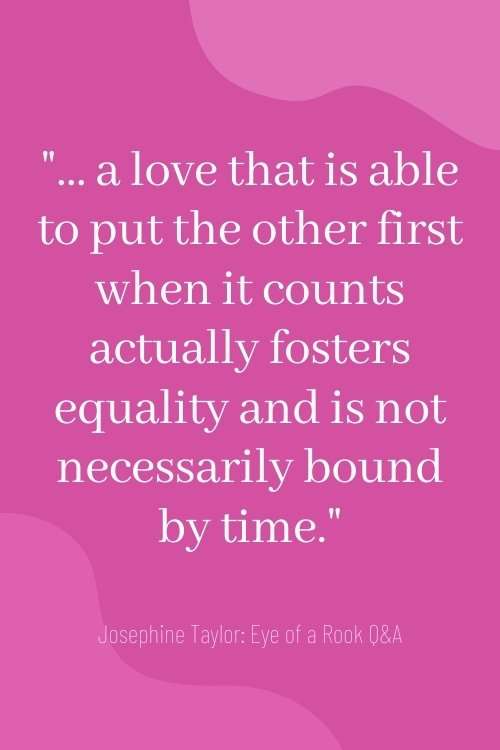 Alice’s relationship with Duncan began as an unequal power structure, with Duncan her former university tutor – a considerably older man already established in his career. Though their marriage now appears equal, Alice’s illness and the way in which Duncan responds prompts her to question this.
Alice’s relationship with Duncan began as an unequal power structure, with Duncan her former university tutor – a considerably older man already established in his career. Though their marriage now appears equal, Alice’s illness and the way in which Duncan responds prompts her to question this.
Arthur and Emily are passionately in love when they marry. Once Emily becomes ill, Arthur struggles with her inability to recover, but he seems emotionally attuned to her in ways that we probably think of as quite modern.
I think I wanted to communicate with this strategy that every relationship is unique, complex and highly individual. Also, though we are influenced by society in the expression of gender, a love that is able to put the other first when it counts actually fosters equality and is not necessarily bound by time.
What is the significance of the rook in the narrative?
Another unplanned element! I came across this bird when I was reading Tom Brown’s School Days, by Thomas Hughes. Like Tom, Arthur attends Rugby School, and it was lovely to integrate elements of that nineteenth-century school experience into my novel, including the rooks that circle the great elms, or ‘rook-trees’.
As I wrote, rooks began to crop up spontaneously, and I realised that the way they appeared often referred to mothering – how Arthur was mothered, and how he might ‘mother’, or care for, others. In the narrative they often mirrored his state of mind.
Gradually the rook became more than a creature of Victorian England, and significant in the way in which the two timelines are connected. But I’ll leave it to the reader to find out just how!
The book gives an insight into academic life and creativity and will probably appeal to people who enjoyed A.S. Byatt’s Possession or Geraldine Brooks’ People of the Book, or even Dominic Smith’s The Last Painting of Sara de Vos. Why do you think we as readers are endlessly fascinated by characters working as researchers?
Readers love a good mystery, and a character who is researching in order to solve something is like a detective. Usually, this researcher is emotionally invested in solving the mystery, just as Alice is, and the reader is brought along for that ride, uncovering the clues along with the character researcher – that research journey becomes the driving force of the novel, and an intensely creative process.
Having a researcher as a central character also provides the opportunity to communicate ideas as questions and solutions, meaning that they are alive with meaning rather than dry things, distant from our everyday lives.
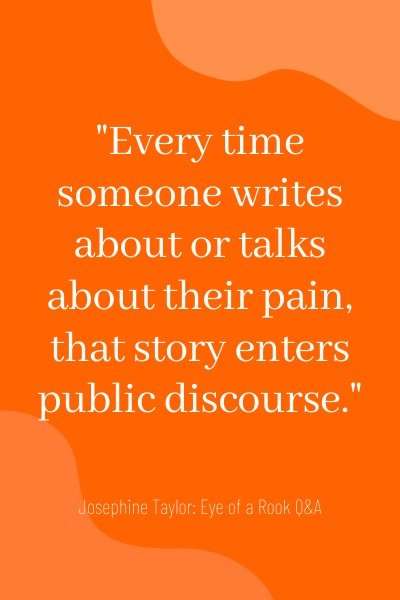 Two women in your book suffer from chronic gynaecological pain. What kind of information or discussions still need to happen in order for our community to support sufferers of chronic pain?
Two women in your book suffer from chronic gynaecological pain. What kind of information or discussions still need to happen in order for our community to support sufferers of chronic pain?
I’ve had vulvodynia for 21 years, and I’ve seen some big changes during this time. We now have terminology, funding for research, and organisations committed to supporting women with pelvic pain; Facebook groups, podcasts, informational and self-help books – even memoirs. But there’s still a long way to go and, with up to 16% of all women experiencing some form of unexplained vulvar pain or discomfort lasting three months or longer at some point in their lives, the critical need to continue.
What can we do about that? Projects like mine are all steppingstones to awareness and increased understanding. Every time someone writes about or talks about their pain, that story enters public discourse. Through adding up all our stories, a realistic narrative of vulvodynia is created.
What’s next for you?
I’m very interested in intergenerational trauma and genetics, and I have stories of the members of one family over a couple of centuries and in different countries popping up in my mind. But it’s early days, and I have heaps to learn about both trauma and genetics before I can embed these ideas in narrative. Fortunately, I love to research!
Useful Organisations: International Society of Vulvovaginal Disease, Australian and New Zealand Vulvovaginal Society, National Vulvodynia Association (US), Vulval Pain Society (UK), Gynaecological Awareness Information Network (Aus)
Disclosure: If you click a link in this post we may earn a small commission to help offset our running costs.
Sign up to our Booklover Book Reviews emails and receive our gift for new subscribers. LEARN MORE >>
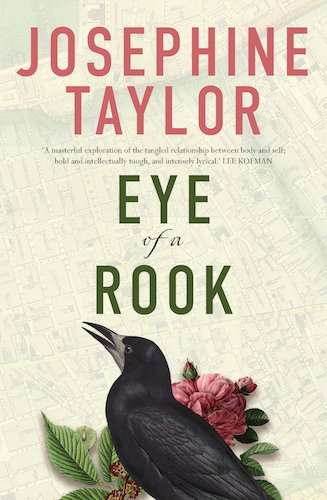 Eye of a Rook Book Synopsis
Eye of a Rook Book Synopsis
In 1860s London, Arthur sees his wife, Emily, suddenly struck down by a pain for which she can find no words, forced to endure harmful treatments and reliant on him for guidance. Meanwhile, in contemporary Perth, Alice, a writer, and her older husband, Duncan, find their marriage threatened as Alice investigates the history of hysteria, female sexuality and the treatment of the female body – her own and the bodies of those who came before.
Praise for this novel:
‘A masterful exploration of the tangled relationship between body and self; bold and intellectually tough, and intensely lyrical.’ – Lee Kofman
‘Eye of a Rook is raw and intelligent, a searing depiction of the secret journey of female bodies.’ – Donna Mazza
‘Courageous and enthralling … this compassionate, beautifully written book explores important questions about the forces that make us who we are and who we might wish to become.’ Susan Midalia
(Fremantle Press, February 2021)
Get your copy of Eye of a Rook from:
Amazon Booktopia AU Book Depository
More moving & impactful literature:
The Museum of Forgotten Memories by Anstey Harris / Mother of Pearl by Angela Savage / Elephants with Headlights by Bem le Hunte / Animal People by Charlotte Wood / The End of Seeing by Christy Collins
About the Author, Josephine Taylor
Josephine Taylor is a writer and freelance editor who lives on the coast north of Perth, Western Australia. She is Associate Editor at Westerly Magazine and an Adjunct Senior Lecturer in Writing at Edith Cowan University. Josephine teaches, facilitates and judges in literary fiction and creative non-fiction. Her personal essays and fiction have been anthologised, and published in journals including Axon, M/C Journal, Outskirts, Southerly, TEXT and Westerly. Eye of a Rook is her debut novel.
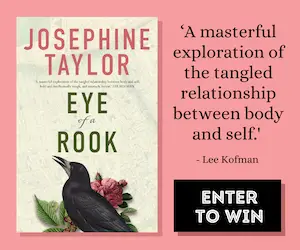 Worldwide eBook Giveaway
Worldwide eBook Giveaway
Thanks to Fremantle Press we have 2x Apple Book copies of Eye of a Rook by Josephine Taylor to giveaway.
The winners will be emailed a single-use promotional code for Apple Books. So to download the book, winners will need to have access to an Apple device, i.e. iPhone, iPad or Mac computer.
Entries open worldwide, close midnight 15 February 2021.
See entry form below. Ensure you scroll to the bottom of this form and press submit to register your entry. You can improve your chance of winning by:
- retweeting this Tweet (+2 entries)
- sharing this Pin with your followers on Pinterest (+3 entries); and
- sharing this Facebook post (incl. link) with your Facebook followers (+4 entries)
The lucky winners will be randomly selected and announced on our Facebook Page.
SORRY, ENTRIES CLOSED – See winners announcement.
